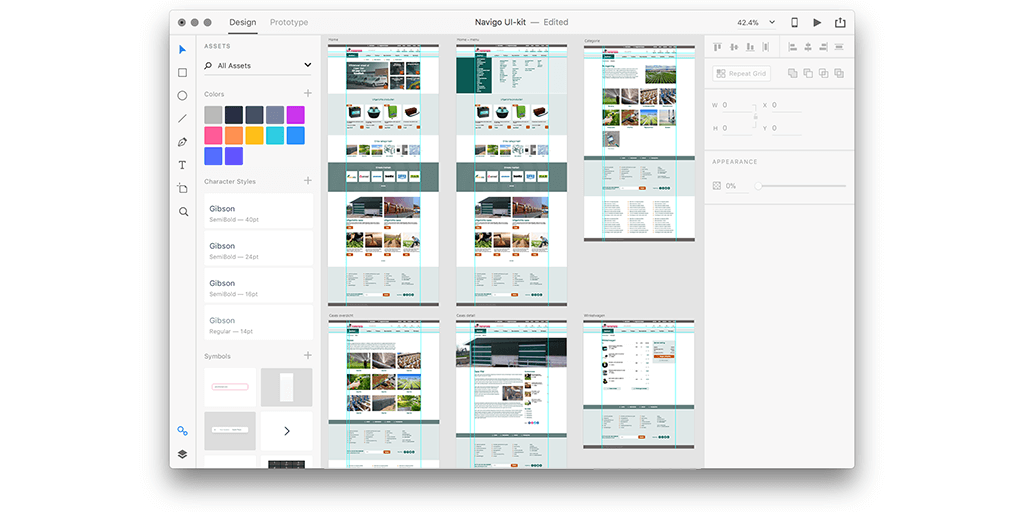Unraveling the secrets of user-centric digital product mastery could be the game-changer in your product development strategy. This approach prioritizes the user’s experience, ensuring that every aspect of the product resonates with their needs and preferences. But what exactly are these secrets, and how can you incorporate them into your own product design process?
The secrets of User-Centric Digital Product Mastery lie in prioritizing customer satisfaction, focusing on digital experiences, accessibility, and a meticulous design process. It involves incorporating user input in every component of product design, ensuring an intuitive user journey.
Intrigued? Dive deeper with us as we explore the intricacies of user-centric digital product mastery and uncover how you can revolutionize your product design strategy. Stay tuned to learn how to create digital products that not only meet user expectations but exceed them.
Understanding User Needs in Design
User-centric digital product development, driven by design principles, is all about designers understanding user needs for effective experience design, ensuring intuitiveness. It’s like piecing together a user research puzzle, where each piece represents different aspects of your target audience’s product experience, user journey maps, and user testing results.
The Empathy Factor
Empathy plays a big role here. Product experience isn’t just about feeling what users feel, but understanding their product adoption needs from their perspective in the realm of digital experiences and product design. This is where user research comes into play.
- User experience design incorporates empathy and business principles, adopting input from users to create products that resonate with them.
- For instance, in the business realm, technical support teams utilize principles of empathy to understand and enhance product experience, effectively resolving user issues and boosting product adoption.
Feedback is Gold
Customer feedback is pure gold for accurate insights. It’s like a compass guiding you towards improving product experience and product adoption, essential principles in business, to meet user needs.
- Regular user testing helps gather valuable feedback.
- Companies like Apple and Google constantly rely on user testing and user input for product enhancements, focusing on user experience design and utilizing user journey maps.
Satisfaction Equals Meeting Needs
There’s a direct link between user satisfaction, product experience, and meeting their needs in business. This connection is crucial for product adoption and is guided by certain principles. When you hit the bullseye with your product design through user experience and user testing, satisfaction follows naturally in your business, guided by user journey maps.
- Usability studies reveal that products designed with user experience in mind, adopting end-user focused business principles, have higher satisfaction rates.
Decoding User Requirements
Identifying and analyzing users’ product adoption and product experience requirements may seem daunting, but it’s a doable business principle. Techniques such as user testing, surveys, interviews, and usability tests can be used to decode these user experience requirements. This process is essential for understanding the user journey and incorporating valuable user input.
- Surveys can help gauge general trends among your target audience, enhancing user experience, understanding the user journey, and valuing user input for business.
- Interviews provide detailed insights into individual user experiences.
Understanding user needs isn’t rocket science; it just requires UX research experience, an empathetic business approach, constant communication through feedback, and effective techniques to decode requirements. If done right, UX research can elevate your business’s user experience and take your digital product development game to new heights!
UX Research Role in Product Development
UX research is the backbone of product development. User experience influences functionality and usability, informs business design, and boosts conversion rates through effective UX research.
Influence on Functionality and Usability
UX research plays a big part in shaping products. UX research helps developers understand user needs through experience, leading to products that are easier to use and more functional.
- For example, the user experience of Slack’s easy-to-use interface was shaped by extensive UX research.
Different Methods Used
In UX research, there’s no one-size-fits-all method for enhancing user experience. Techniques like surveys and interviews can be used depending on the product and target audience to enhance user experience.
- Surveys: Useful for gathering data from a large group.
- Interviews: Ideal for getting detailed insights into individual user experiences.
Informing the Design Process
UX research doesn’t just influence design—it drives it. By understanding the user experience and what users want, designers can create products that meet those needs head-on.
- A case study? Airbnb. Their user-friendly design is a direct result of comprehensive UX research and extensive experience.
Improved Conversion Rates Through Effective Research
Effective UX research isn’t just good for users—it’s also beneficial for business, enhancing the overall experience. Products designed with user experience in mind see higher engagement and conversion rates.
- Statistics indicate that businesses investing in user experience (UX) witness a decrease in the cost of customer acquisition, a reduction in customer churn, and an increase in customer lifetime value (CLTV).
Detail-Oriented Approach in Digital Design
Crafting digital products is like cooking a gourmet meal. Each detail matters, just like each ingredient does.
Importance of Details in User Experience
A detail-oriented approach can elevate user experience to new heights. Just think about it – tiny details can significantly influence the user experience, making or breaking the entire perception of a product. For example, if users experience a button that doesn’t respond immediately when clicked, they might feel frustrated and abandon the product.
Precision’s Role in Intuitive Interfaces
Precision is key in crafting intuitive interfaces. It’s all about ensuring the user experience is optimal by making sure things are exactly where they should be. If design elements are misplaced or confusing, users will struggle to navigate your product.
Meticulous Designs Reduce User Errors
Meticulous designs help reduce user errors significantly. It’s as simple as that! Users don’t have to guess what to do next; instead, they follow clear visual cues and instructions.
The Connection Between Design and Perception
The connection between meticulous designs and reduced user errors isn’t just theoretical – it’s proven by research data. Studies show that well-thought-out design elements decrease cognitive load on users, helping them focus better on tasks at hand.
Achieving Aesthetics with Functional Designs
Aesthetic designs and practical functionality are key to a user-centric digital product. They shape the user’s first impressions and navigation experiences.
Striking Balance Between Beauty and Usability
In digital product development, the secret is in balancing the user experience. Designers strive for visual appeal without compromising on usability. For instance, a website may be visually stunning but if users can’t find what they’re looking for, it’s pointless.
- User Experience and Visual Appeal: This is your favourite design element that catches your eye and enhances the user experience. It could be an appealing color scheme or a striking layout.
- Usability: This refers to how easily users can navigate through the interface. It involves design principles such as consistency, accessibility, and minimalism.
First Impressions Matter
The aesthetics of a product influence users’ first impressions about it. Research shows that users form an opinion about a website within 50 milliseconds! That’s quicker than a blink of an eye!
Functionality Fuels Seamless Navigation
Functional designs enhance seamless navigation experiences. They help users perform tasks efficiently without getting lost or confused. Great design considers user behaviors and preferences to ensure customer satisfaction.
Minimalist Designs for Better Usability
Minimalist designs are lean yet powerful. They use negative space effectively to emphasize important elements while reducing clutter.
- Performance: Minimalist designs load faster due to fewer elements which improves overall performance.
- Work: With less clutter, designers can focus on improving core functionalities rather than managing excessive elements.
Successful Business Strategies in User-Centric Design
Creating a balance between business objectives and user-centric strategies is key. Businesses gain a competitive advantage through effective implementation of these strategies.
Linking Objectives with User-Centric Strategies
Business success isn’t magic. It’s about linking your business processes with centric design principles. The trick is to align the goals of your company with what users want. For instance, using user journey maps helps understand customer needs better.
Gaining Competitive Advantage
Effective strategy implementation gives you an edge over competitors. When you focus on user feedback, you create products that stand out. A case study by Apple Inc., renowned for its user-centric approach, shows how this strategy leads to market dominance.
Consistent Brand Messaging
Brand messaging isn’t just about fancy logos or catchy taglines. It’s how your brand communicates across all platforms consistently. Coca-Cola has done this brilliantly, ensuring their message “Open Happiness” resonates everywhere.
Customer Retention and Strategy Execution
Well-executed strategies result in high customer retention rates. Customers stick around when they feel understood and valued. Amazon is a prime example here, with their heuristic tips leading to an impressive 91% retention rate among Prime members.
Wrapping Up the Secrets of Digital Product Success
In the realm of digital product development, understanding user needs and implementing a detail-oriented approach are non-negotiable. UX research plays a pivotal role in unearthing these needs, paving the way for functional designs that balance aesthetics and usability. Coupled with strategic business practices, this user-centric methodology can propel your digital product to success.
The journey doesn’t end here though. Continual learning and adaptation are vital to maintaining relevance in this dynamic field. So why not dive deeper into these secrets? Explore more about user-centric design strategies, stay updated with our latest insights, and let’s create amazing digital products together!
FAQ 1: What is User-Centric Design?
User-Centric Design (UCD) is an iterative design process that involves understanding user needs at each stage of the design and development process. The goal is to create products that provide meaningful and relevant experiences to users.
FAQ 2: How Does UX Research Contribute to Product Development?
UX research helps in understanding users’ behaviors, needs, motivations which can be used to inform all stages of product development. It ensures that the final product meets real-world requirements and provides an optimal experience for users.
FAQ 3: Why is Detail-Oriented Approach Important in Digital Design?
A detail-oriented approach in digital design ensures every element serves a purpose contributing towards overall usability and aesthetics. It improves functionality while ensuring consistency across different parts of the product.
FAQ 4: Can Aesthetics Coexist with Functional Designs?
Yes, balancing aesthetics with functionality is key in successful digital product design. An aesthetically pleasing interface can enhance user engagement while effective functionality ensures smooth user interactions.
FAQ 5: How Do Business Strategies Influence User-Centric Design?
Business strategies guide decision-making throughout the design process aligning it with business objectives. This includes identifying target audiences, setting measurable goals, and integrating user feedback into product iterations.





